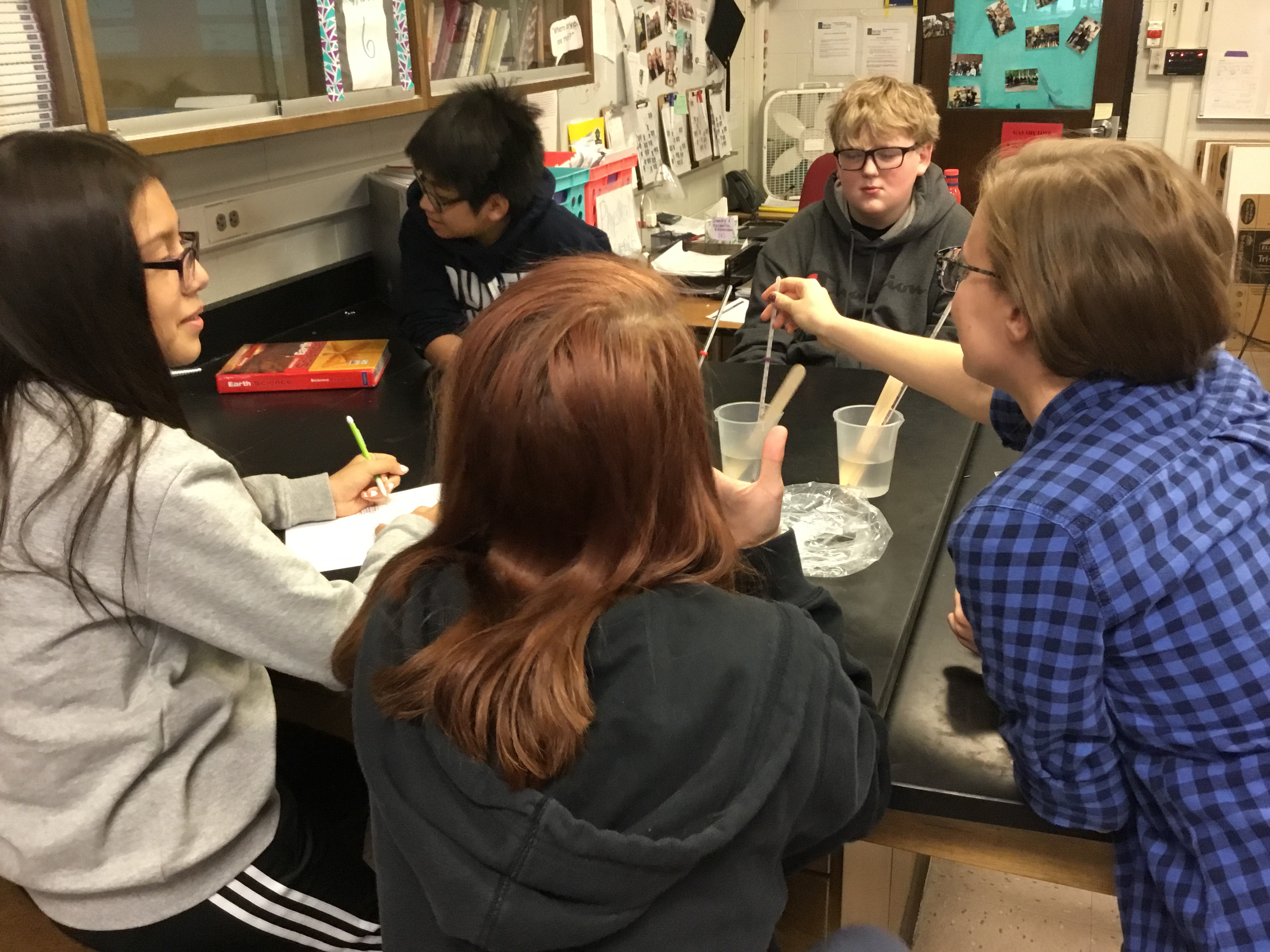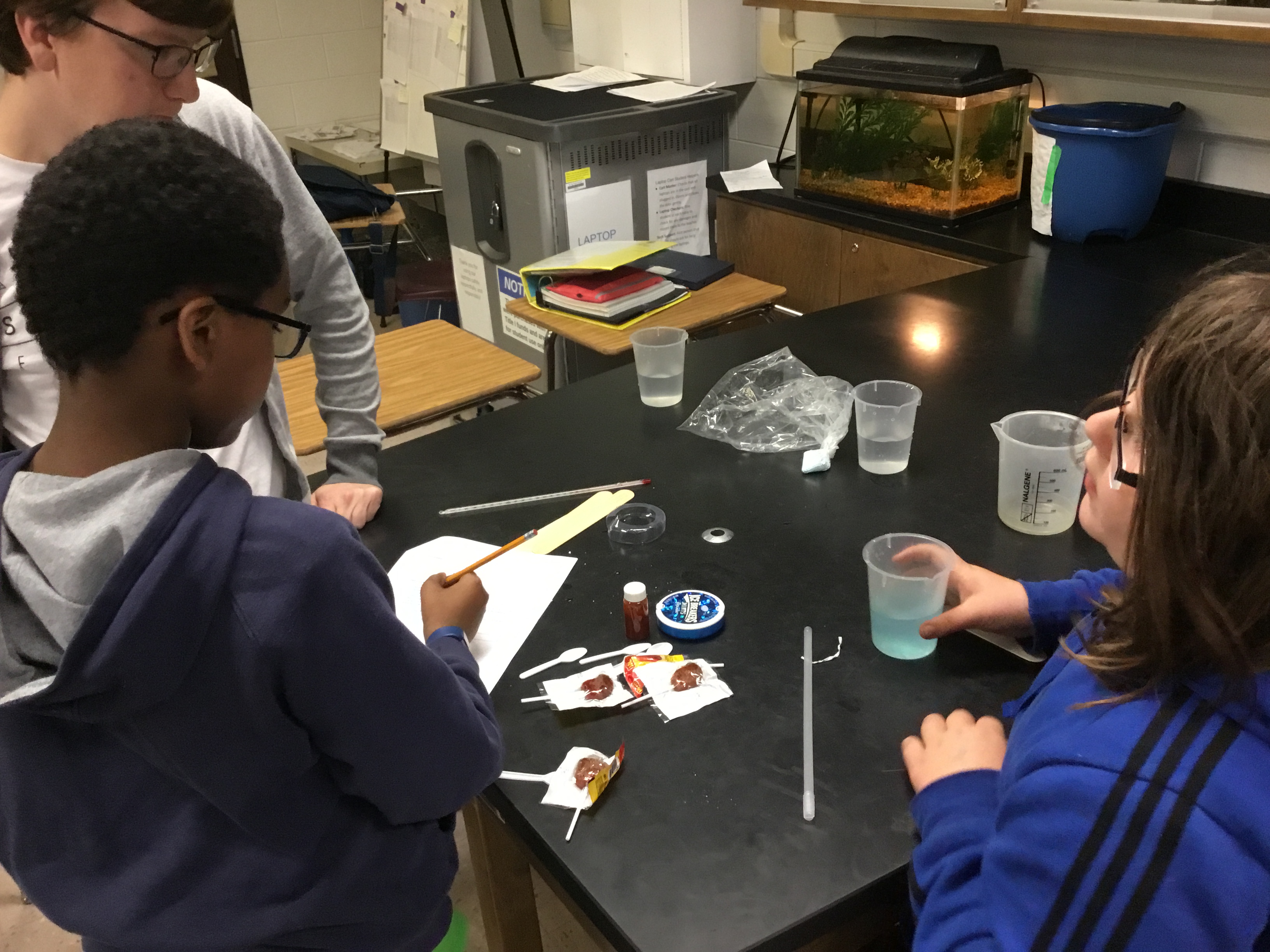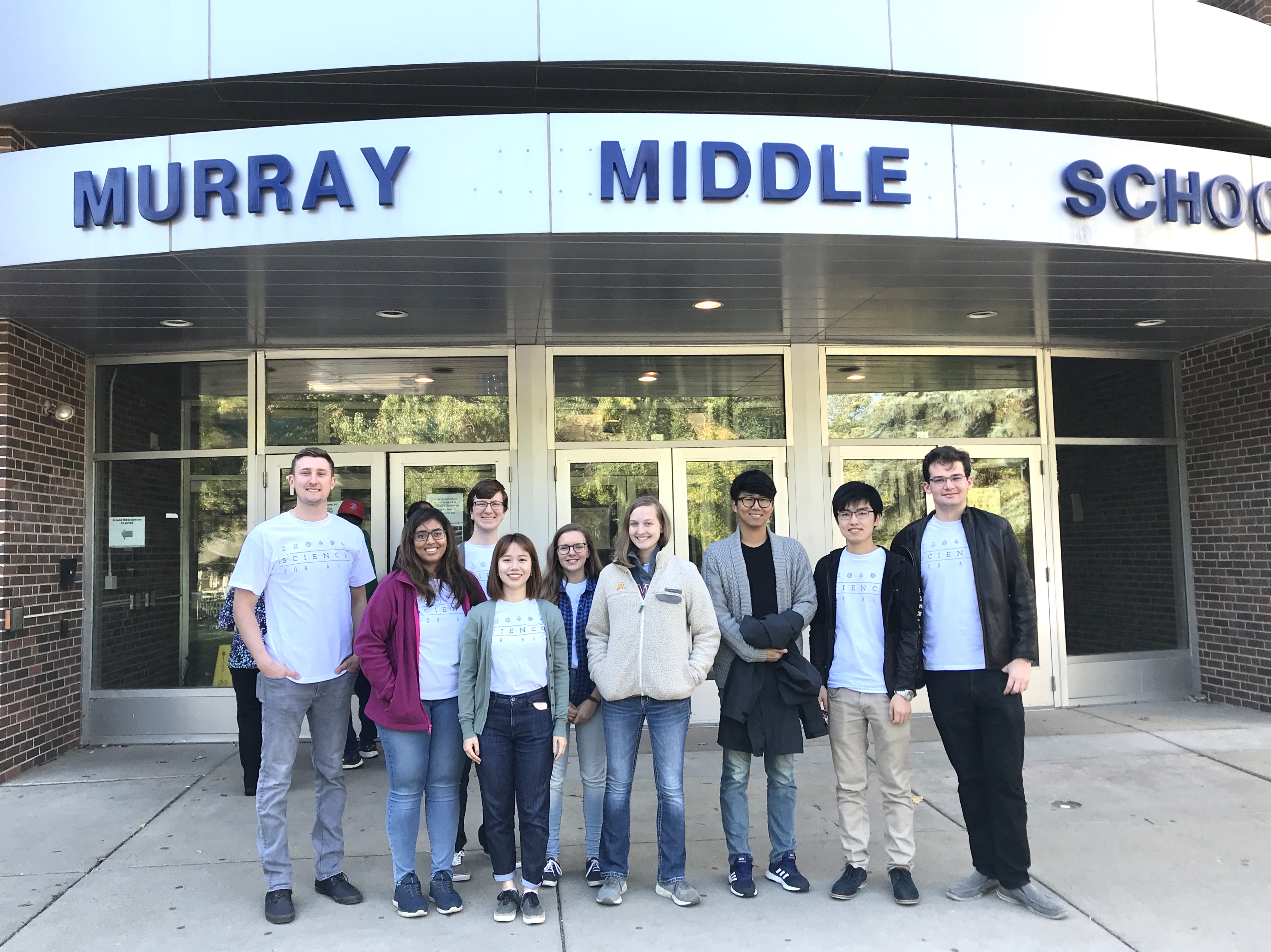
Murray 10/9/2019 – “Cooling” Effect of Mints
Experiment Leaders: MaryJane Been and Yutong Pang
In flu seasons, we often throw some pieces of mint in our throats for the soothing and cooling sensation, but is mint actually cooling our throat? Similarly, when we eat spicy food, is the burning feeling caused by a rapid temperature increase in our mouth? In the October 2019 visit to Murray Middle School, we explored the “cooling” and “heating” effect of mint and chili to test if mint and chili can cause a temperature change when dissolved in water.
We started with asking the Murray students what they think about mint. Most of the students responded with “cool” or “cold”. Then we asked them to form hypotheses about whether mint or chili can result in a temperature change when dissolved in water and break into groups of three to perform experiments to test their hypotheses. The concept of scientific method was introduced here. To answer a question, the students need to form a hypothesis, then design and perform experiments to reach a conclusion on whether to reject or accept the hypothesis.
To study the mint cooling effect, the students began the experiment with three beakers with the same amount of water at room temperature. One beaker was used as the control. Then, students added two tablespoons of crushed mint to the second beaker and two ice cubes to the third beaker. The temperature in the beakers was measured before and after the addition of substances. Similarly, to study the heating effect of chili, three beakers with the same amount water at room temperature was prepared. Likewise, one beaker was used as the control. Two tablespoons of sriracha and two tablespoons of 80 hot water was added to the second and third beaker respectively. Temperature measurements were taken before and after substance addition. We also encourage the students to try some mint candies and chili covered mango flavored lollipops.
Students claimed they had the “cooling” and “heating” sensation when having mint and chili in their mouths. Temperature changes were observed in beakers with ice cubes and hot water. However, no change in temperature was observed when mint or chili was dissolved in water. At the end of the experiment, we explained that menthol in mints and capsaicin in chili can both bind onto the temperature sensor on human tongue. The binding triggers the same response as if there was an actual change in temperature. The “cooling” from mints and “heating” from chili are only illusions. 